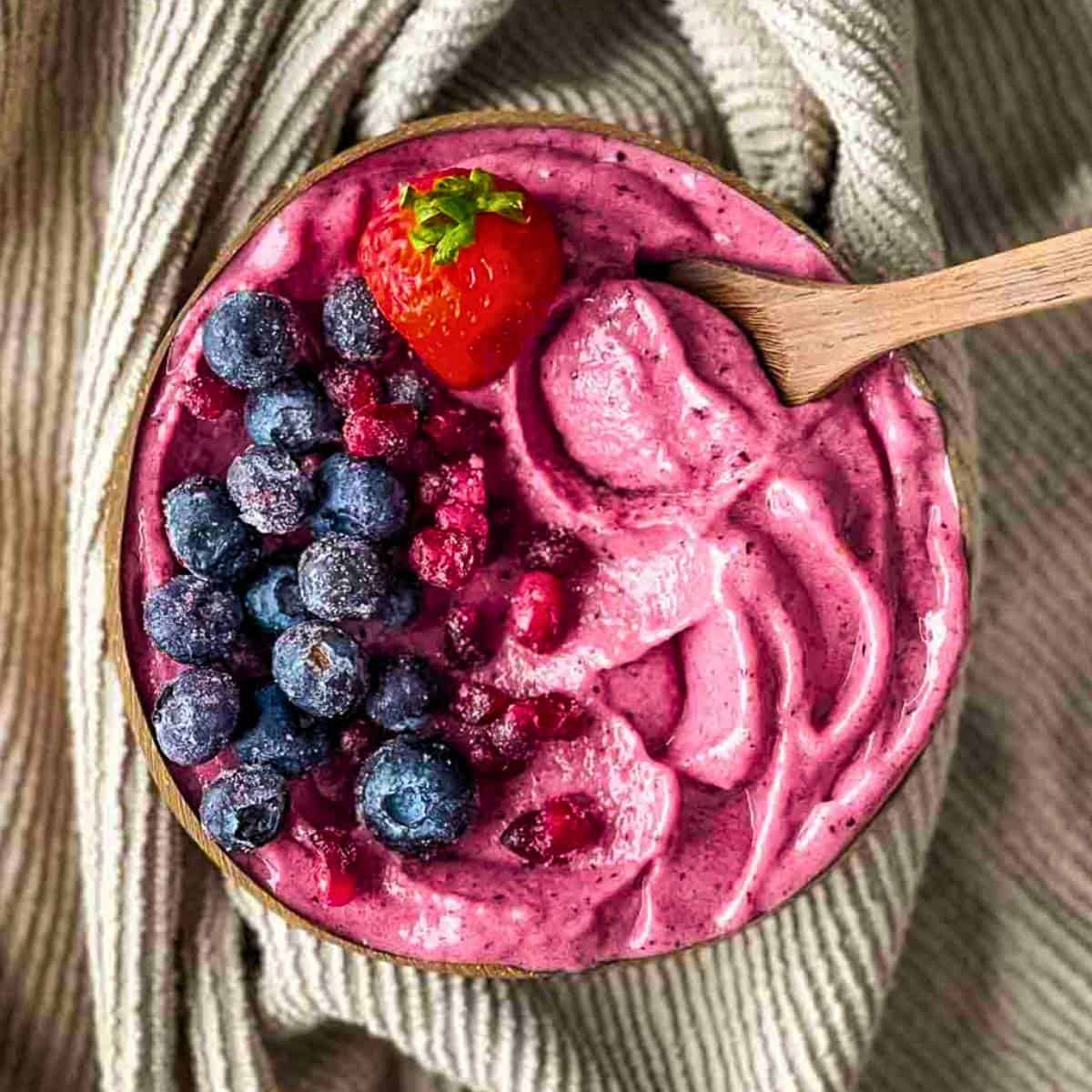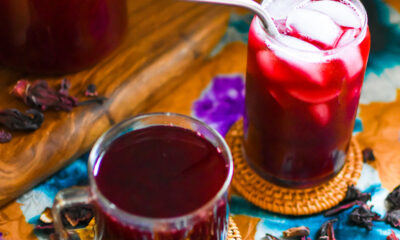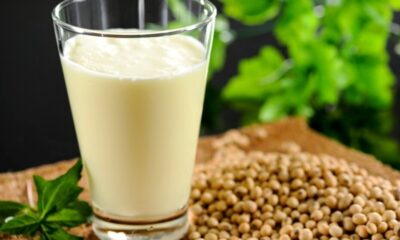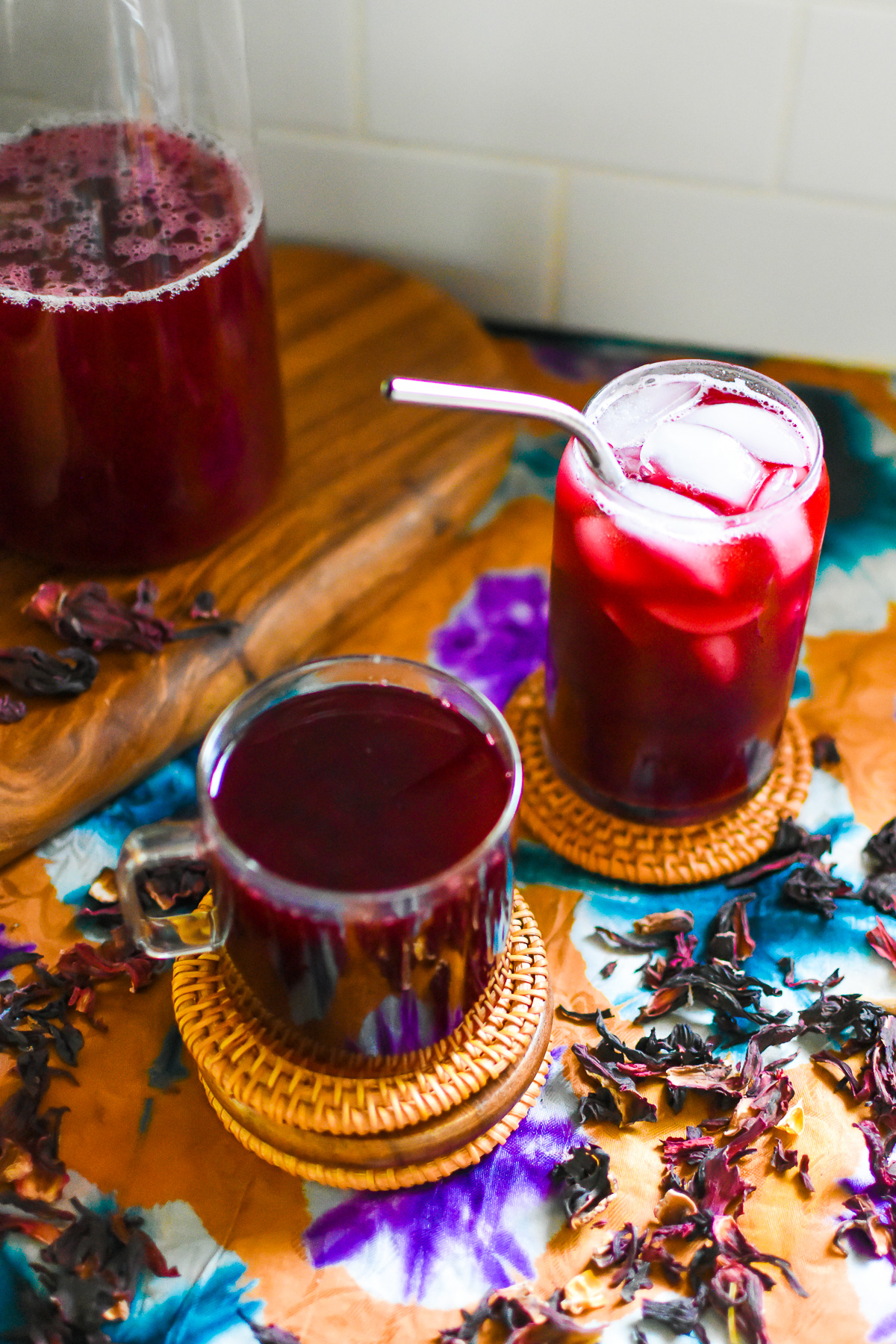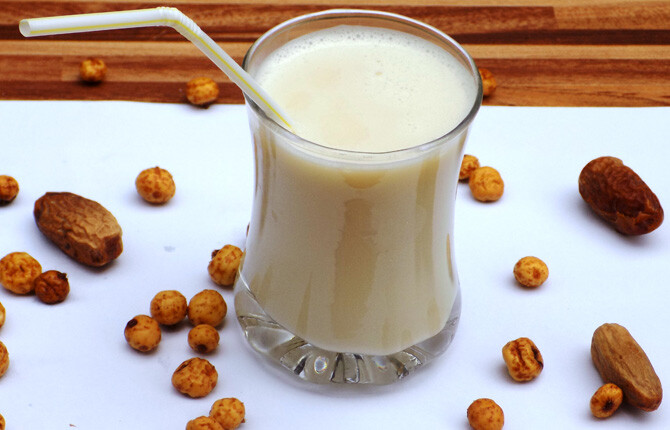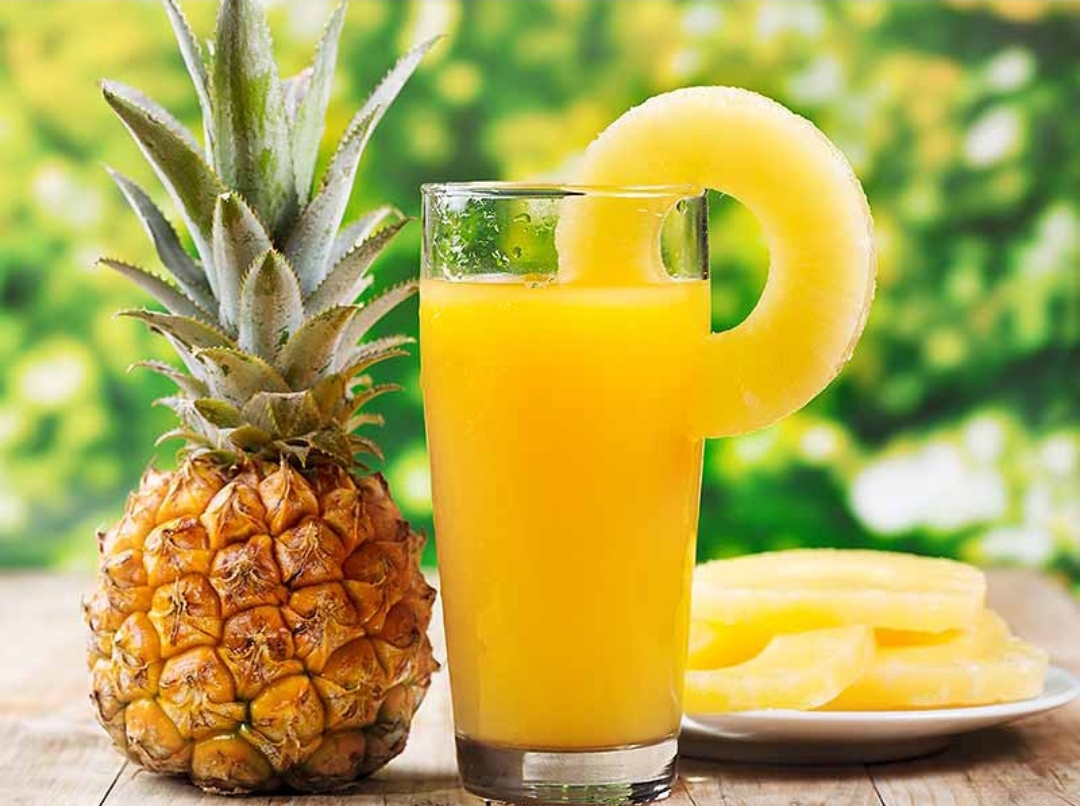Have you ever dreamed of a smoothie bowl that’s so thick and creamy it’s like eating soft-serve ice cream? Well, the secret lies in using only frozen fruit and vegetables.
This simple trick is the key to achieving an incredibly thick, smooth, and creamy consistency in your smoothie bowls. With a variety of flavour combinations and creative toppings, you can create hundreds of delicious and nutritious smoothie bowls for breakfast, snacks, or desserts!
Regular Smoothies vs. Smoothie Bowls
Unlike regular smoothies that are served in glasses and sipped, smoothie bowls are a completely different experience. The most significant difference is the consistency.
While you may enjoy a good smoothie, smoothie bowls are much thicker and meant to be eaten with a spoon from a bowl. They’re typically topped with various fresh fruits, crunchy nuts, granola, chocolate chips, and other exciting ingredients. The goal is to achieve a thick and creamy texture, not a soupy or watery one.
Ingredients
There are countless options for smoothie bowls, both in terms of base ingredients and flavour or nutrition enhancements. Here’s a basic formula for creating a thick smoothie bowl:
- 2 cups of frozen fruit (or a mix of frozen fruit and vegetables)
- ¼ cup of liquid
Frozen Ingredients:
- Frozen fruits: Bananas, mangoes, peaches, and berries are excellent choices for frozen fruits.
- Frozen vegetables: To reduce sugar content and add bulk and creaminess, consider incorporating neutral-tasting vegetables like zucchini or cauliflower. Frozen cauliflower is particularly effective. Frozen avocado chunks are also a great option.
Liquid Base:
- Choose a liquid that complements the flavours of your smoothie. Options include dairy or plant milk (almond milk, oat milk, coconut milk), coconut water, fruit juice, or plain water. For a creamier texture, opt for milk.
Flavour/Nutrition Enhancements:
- Creamy ingredients: Avocado, plain Greek yoghurt, or Icelandic skyr can add thickness and healthy fats.
- Extra nutrition: Nut butter, oats, acai, and protein powder can provide additional nutrients and flavour.
- Sweeteners and flavour enhancers: Honey, maple syrup, agave nectar, liquid stevia, vanilla extract, cinnamon, cocoa powder, or raw cacao powder can be used to sweeten and flavour your smoothie bowl.
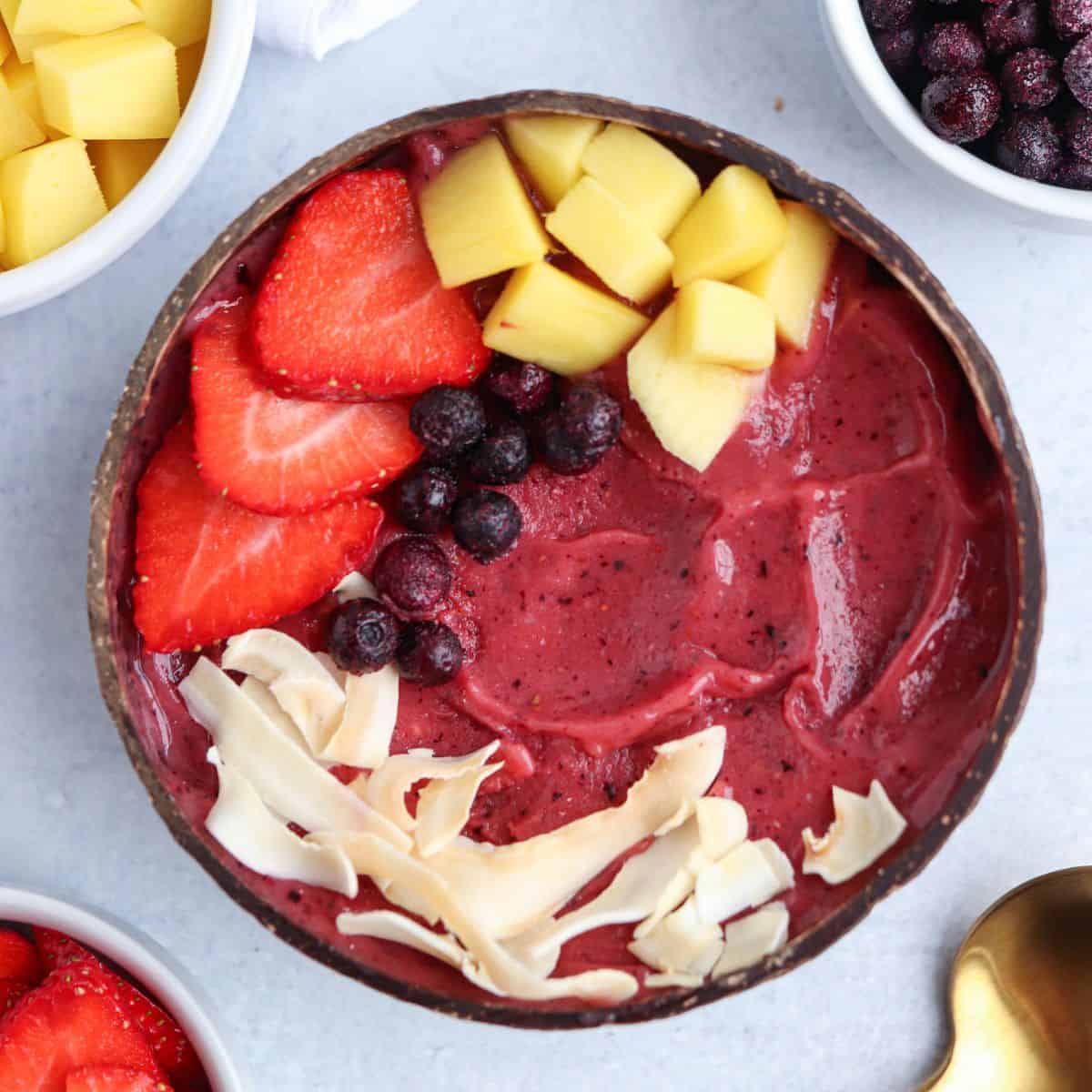
How to Make a Super Thick Smoothie Bowl
- Measure your ingredients: Gather all your ingredients, including toppings, before starting.
- Start with liquid: Pour ¼ to ⅓ cup of liquid into the blender jug.
- Add frozen fruit and flavour enhancers: You can add a liquid sweetener later if needed.
- Blend on low speed, then increase as you go: Use a spatula to scrape the sides and move the frozen ingredients around if necessary.
- Achieve a super smooth consistency: Stop blending once the mixture is smooth and creamy.
- Add toppings and enjoy!
Smoothie Bowl Topping Ideas
- Sliced fresh fruit (banana, berries, mango, kiwi)
- Chocolate chips or cacao nibs
- Unsweetened or toasted coconut flakes
- Chopped nuts
- Seeds (hemp seeds, pepitas, chia seeds)
- Nut butters
- Hard chocolate shell
More Tips for Thick Smoothie Bowls
- Stick to frozen fruit: Fresh fruits can make the smoothie too watery.
- Don’t add too much liquid: Start with a small amount and add more as needed.
- Use a powerful blender: A high-speed blender is ideal for cutting through ice.
- Be patient: If the blender stalls, scrape the sides and restart.
- Don’t overprocess: Avoid over-blending to maintain a thick consistency.
- Add at least one creamy ingredient: Avocado, mango, peach, or frozen coconut milk can add thickness and creaminess.
- Try frozen veggies: Zucchini or cauliflower can act as a thickening agent.
By following these tips and experimenting with different ingredients, you can create delicious and nutritious smoothie bowls that are thick, creamy, and perfect for any occasion.
Visit here to read more.


